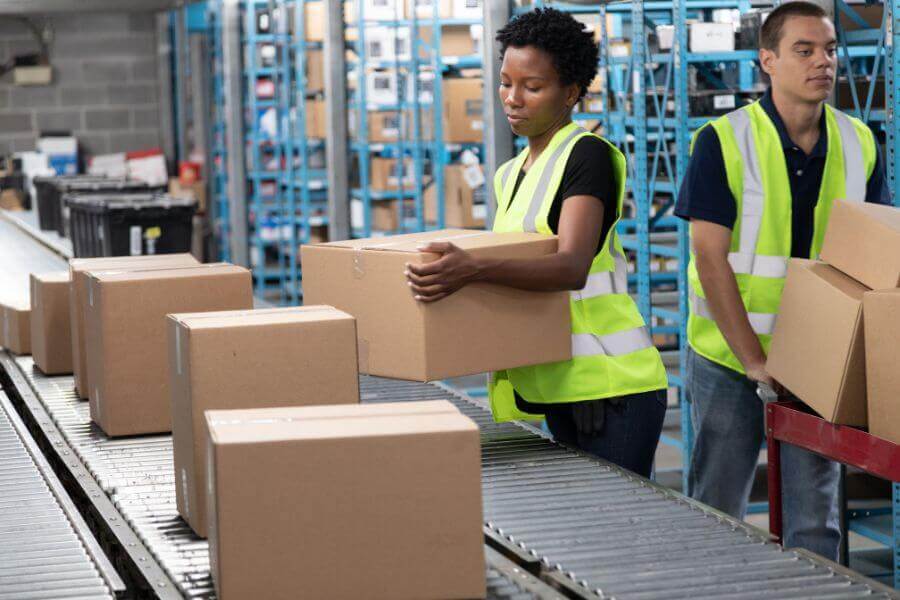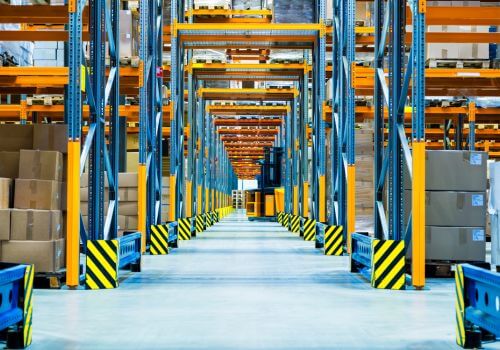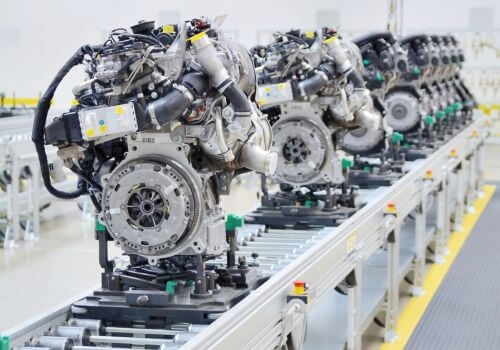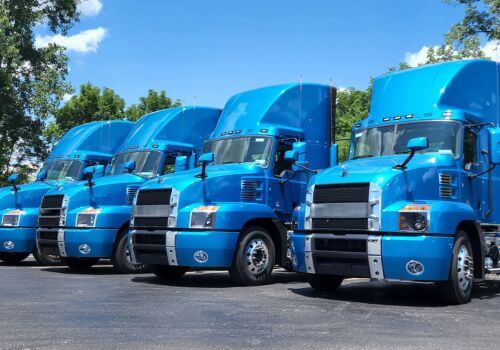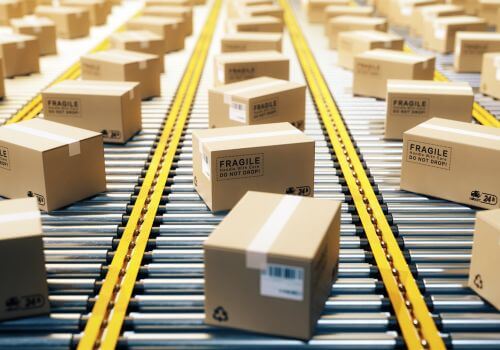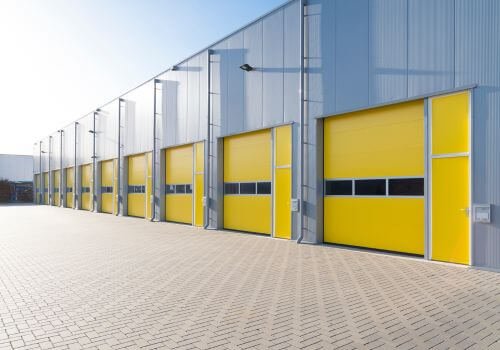A fulfillment center is a crucial component in modern logistics, playing a vital role in the e-commerce and retail supply chain. This comprehensive overview will explore the concept of fulfillment centers, their functions, operations, and how they differ from traditional warehouses.
What is a fulfillment center? What is its purpose?
A fulfillment center is a specialized facility designed to efficiently process and ship customer orders. It serves as a hub for all logistics processes needed to get products from sellers to customers. Unlike traditional warehouses, which primarily focus on long-term storage, fulfillment centers are dynamic spaces optimized for quick inventory turnover and order processing.
The primary purpose of a fulfillment center is to streamline the order fulfillment process, ensuring that customers receive their purchases quickly and accurately. These centers are often operated by third-party logistics providers (3PLs) and cater to various businesses, particularly e-commerce and direct-to-consumer (D2C) brands.
What are the key functions of fulfillment centers?
Fulfillment centers perform a wide range of tasks to ensure smooth order processing and delivery. Here are the main functions:
Receiving and inventory management
When inventory arrives at a fulfillment center, it is:
- Received and inspected for quality and accuracy
- Logged into the inventory management system
- Stored in designated areas for easy retrieval
Real-time inventory tracking is a crucial aspect of fulfillment center operations. Advanced software systems keep track of stock levels, allowing for efficient inventory management and preventing stockouts or overstocking.
Order processing
Once a customer places an order, the fulfillment center springs into action:
- Order information is received from the e-commerce platform
- Pick lists are generated for warehouse staff
- Items are picked from their storage locations
- Orders are assembled and prepared for packing
Picking and packing
Fulfillment centers employ various picking methods to efficiently collect items for orders:
- Single-order picking
- Batch picking
- Zone picking
- Wave picking
After picking, orders are carefully packed to ensure safe transit. This process includes:
- Selecting appropriate packaging materials
- Assembling items in the package
- Adding necessary padding or protective materials
- Inserting packing slips or promotional materials
Shipping
Once orders are packed, they are prepared for shipping:
- Shipping labels are generated and applied
- Packages are sorted by carrier or shipping method
- Orders are staged for pickup by shipping carriers
Fulfillment centers often have relationships with multiple carriers to offer various shipping options and optimize costs.
Returns processing
Many fulfillment centers also handle returns, which involves:
- Receiving returned items
- Inspecting products for damage or defects
- Restocking sellable items
- Processing refunds or exchanges
What are the technologies used in fulfillment centers?
Modern fulfillment centers leverage cutting-edge technologies to optimize operations and meet the growing demands of e-commerce. Here are some key technological advancements shaping the industry:
Warehouse management systems (WMS)
Advanced WMS software serves as the backbone of fulfillment center operations. These cloud-based systems manage inventory, track orders, and coordinate workflows in real-time. Modern WMS platforms integrate with other supply chain management tools, providing a comprehensive view of operations and enabling data-driven decision-making.
Automation and robotics
Fulfillment centers are increasingly adopting automation and robotics to streamline processes:
- Autonomous Mobile Robots (AMRs): These versatile robots navigate warehouses independently, assisting with tasks like inventory transport and order picking.
- Automated Storage and Retrieval Systems (AS/RS): These systems use robotics to efficiently store and retrieve inventory, maximizing space utilization and reducing human error.
- Collaborative Robots (Cobots): Working alongside human employees, cobots enhance productivity in tasks such as picking and packing.
Internet of Things (IoT)
IoT devices provide real-time tracking and monitoring of inventory and equipment. This connectivity enables:
- Enhanced visibility into warehouse operations
- Predictive maintenance for equipment
- Improved inventory accuracy
Artificial intelligence (AI) and machine learning
AI and machine learning algorithms are revolutionizing fulfillment center operations by:
- Optimizing picking routes
- Predicting demand patterns
- Automating decision-making processes
- Enhancing inventory management
Advanced analytics
Big data analytics tools help fulfillment centers:
- Identify trends and bottlenecks
- Optimize resource allocation
- Improve demand forecasting
- Enhance overall operational efficiency
Wearable technology
Wearable devices, such as smart glasses and voice-enabled wearable computers, are improving worker productivity and accuracy:
- Providing hands-free access to information
- Enabling voice-directed picking
- Enhancing worker safety and ergonomics
Drones
Some fulfillment centers are experimenting with drone technology for:
- Inventory counting and auditing
- Monitoring warehouse conditions
- Potentially assisting with small item transport
Fulfillment center vs. Warehouse: Key differences
While fulfillment centers and warehouses may appear similar at first glance, they serve distinct purposes in the supply chain and have several key differences:
Purpose and function
Fulfillment centers:
- Optimized for short-term storage and rapid order processing
- Designed to handle individual customer orders efficiently
- Serve as a crucial link between e-commerce retailers and end consumers
Warehouses:
- Primary focus on long-term storage of goods
- Designed for bulk inventory management
- Often serve as distribution hubs for wholesalers or manufacturers
Inventory turnover
Fulfillment centers:
- Rapid inventory turnover
- Most items are shipped within days or weeks of arrival
- Constant flow of goods in and out of the facility
Warehouses:
- Slower inventory turnover rates
- Goods may be stored for months or even years
- Focus on maintaining stock levels for future distribution
Operational complexity
Fulfillment centers:
- Complex operations including receiving, storage, picking, packing, shipping, and returns processing
- Layout designed for efficient order fulfillment and quick item retrieval
- Emphasis on streamlined workflows for rapid order processing
Warehouses:
- Operations typically limited to storage, basic inventory management, and occasional bulk shipments
- Simpler layout focused on maximizing storage space
- Less emphasis on quick retrieval of individual items
Technology integration
Fulfillment centers:
- Advanced Warehouse Management Systems (WMS)
- Extensive use of automation, robotics, and real-time tracking systems
- Integration with e-commerce platforms and order management systems
Warehouses:
- Basic inventory management systems
- Limited use of automation technologies
- Focus on tracking bulk inventory movements
Customer focus
Fulfillment centers:
- Primarily B2C focused
- Process individual customer orders
- Directly impact end-consumer satisfaction through order accuracy and shipping speed
Warehouses:
- Typically B2B oriented
- Handle bulk orders and shipments
- Less direct interaction with end consumers
Order processing speed
Fulfillment centers:
- Rapid order processing capabilities
- Handle high volumes of smaller, more frequent orders
- Often offer same-day or next-day shipping options
Warehouses:
- Slower order processing times
- Often deal with larger, less frequent orders
- May take days or weeks to process and ship orders
Value-added services
Fulfillment centers:
- Extensive value-added services
- Often provide kitting, custom packaging, gift wrapping, and personalization options
Warehouses:
- Limited value-added services
- May offer basic services like cross-docking or bulk breaking
Flexibility and scalability
Fulfillment centers:
- Highly adaptable to fluctuating order volumes
- Can easily scale operations up or down based on seasonal demand
- Often utilize multiple locations for strategic inventory placement
Warehouses:
- Less flexible in adapting to changing demand
- Scaling typically involves expanding physical storage space
In summary, a Fulfillment Center is a specialized facility that receives, stores, processes, and ships customer orders quickly and efficiently, serving as a crucial hub in the e-commerce supply chain.

